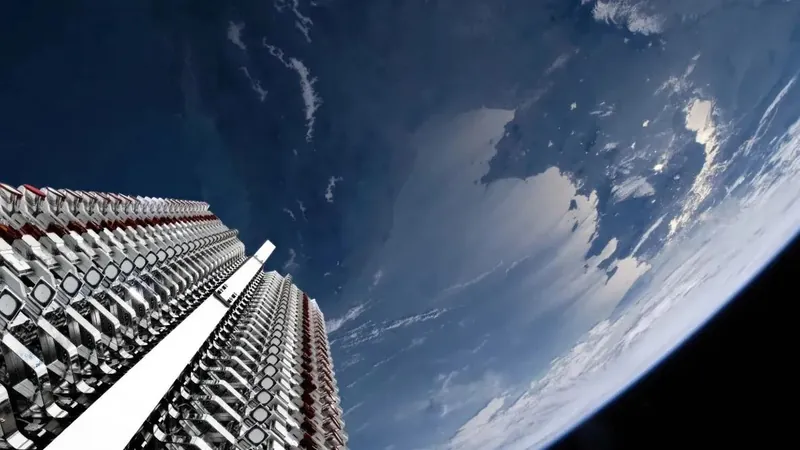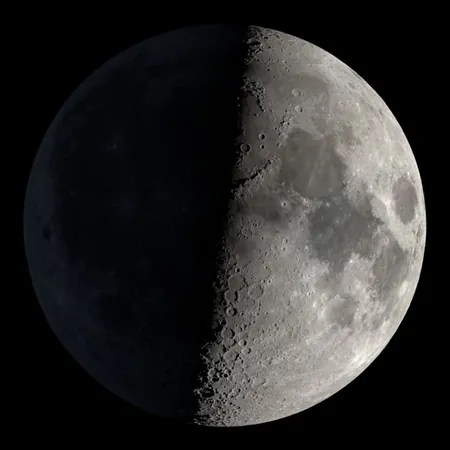
Satellite Air Pollution: A Looming Environmental Crisis Hidden in Legal Gaps
2024-10-04
Author: Nur
The pollution generated by satellites disintegrating upon re-entry into Earth's atmosphere could soon emerge as one of the planet's most pressing environmental challenges. Alarmingly, this specific form of pollution appears to be escaping the clutches of both international space treaties and terrestrial environmental regulations, prompting a group of researchers to propose a possible solution: incorporating pollutants from satellite reentries into the existing framework of the 1987 Montreal Protocol, which bans substances harmful to the ozone layer.
Historically, the issue of air pollution from satellites was largely overlooked, especially during the earlier phases of space exploration. However, the recent surge in megaconstellations—comprising hundreds or thousands of satellites—has catapulted this problem into the limelight. Current estimates predict that in 2023 alone, around 200 metric tons of defunct satellites will have burned up upon re-entry. This figure is striking when compared to the yearly consumption of around 16,000 metric tons of meteorites that harmlessly enter our atmosphere.
Experts forsee that by 2033, the collected debris from satellites could surge to 3,600 metric tons annually—making up over 20% of the natural influx of meteorites. This escalated presence of human-made debris poses a critical concern as these satellites are made of metals and alloys that oxidize into dangerous chemical compounds during reentry. Among these compounds, aluminum oxide—known to reflect sunlight and disrupt ozone molecules—presents major ecological risks.
While the reflective properties of aluminum oxide might superficially seem beneficial in combating climate change, researchers warn against potential unintended consequences of this artificial cooling effect. Minkwan Kim, an associate professor at the University of Southampton, emphasizes the unpredictable nature of such human-induced modifications to the climate system.
Alumina's capacity to degrade ozone—the Earth's protective shield against harmful UV radiation—further complicates the picture. Following the public revelation of the Antarctic ozone hole in the 1980s, measures such as the Montreal Protocol were established to tackle substances like chlorofluorocarbons (CFCs) responsible for ozone depletion. Now, Kim and others advocate for a similar approach to address the pollutants emerging from satellite operations.
A recent study published in Geophysical Research Letters highlighted that chemicals resulting from the incineration of satellites could significantly impact ozone levels if satellite launches continue at their current pace. Kim argues for urgent legislative action to revise the Montreal Protocol to include these emerging pollutants, ensuring the continuity of ozone layer recovery while mitigating unforeseen environmental repercussions.
Regrettably, existing international space treaties, including the 1972 Liability Convention and the 1967 Outer Space Treaty, lack specific provisions to address the environmental impacts of satellite-related pollution on Earth. While these treaties mandate accountability for damage caused by launched spacecraft, they fail to tackle the broader concern of air pollution resulting from satellite activity.
Efforts by experts such as Rachael Craufurd Smith and Micheal Hennesey at recent workshops are pushing for the integration of standards from international environmental law to offset these legal gaps. They point out the necessity for potential amendments to the Convention on Long-Range Transboundary Air Pollution and other relevant regulations.
However, addressing this burgeoning issue could be slow-going; global policymaking often bogs down in geopolitical complexities. Some experts suggest that the space industry may need to proactively seek self-regulatory solutions instead. According to Kim, the urgency of the situation cannot be overstated, as particles from burning satellites might linger in our atmosphere for decades—if not centuries—before fully dissipating.
"Ignoring the escalating threat of satellite pollution could have global ramifications that become evident within the next decade," warns Kim. "We must act swiftly; if we echo the lengthy timelines typically seen in addressing space debris, it may already be too late to avert significant environmental impacts."




 Brasil (PT)
Brasil (PT)
 Canada (EN)
Canada (EN)
 Chile (ES)
Chile (ES)
 España (ES)
España (ES)
 France (FR)
France (FR)
 Hong Kong (EN)
Hong Kong (EN)
 Italia (IT)
Italia (IT)
 日本 (JA)
日本 (JA)
 Magyarország (HU)
Magyarország (HU)
 Norge (NO)
Norge (NO)
 Polska (PL)
Polska (PL)
 Schweiz (DE)
Schweiz (DE)
 Singapore (EN)
Singapore (EN)
 Sverige (SV)
Sverige (SV)
 Suomi (FI)
Suomi (FI)
 Türkiye (TR)
Türkiye (TR)